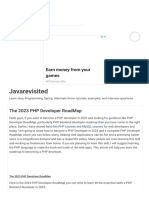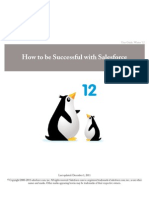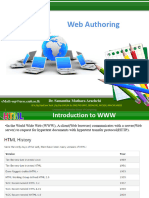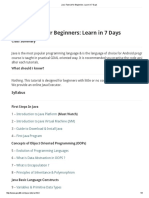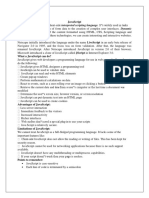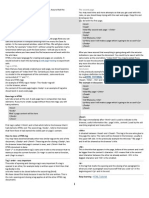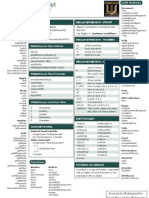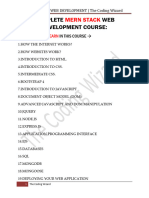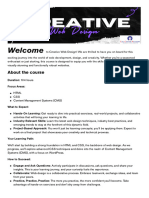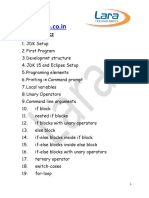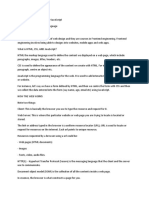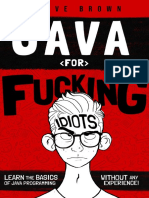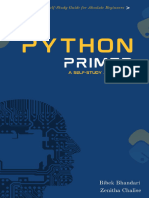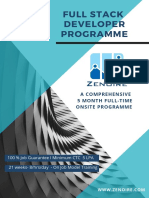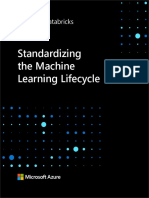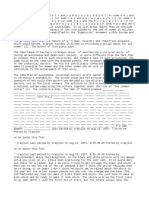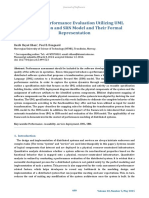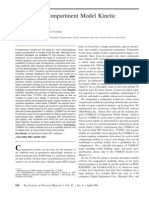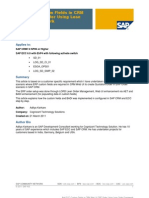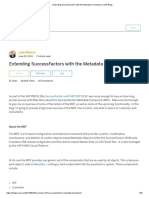SOFTWARE
ENGINEERING
LEARNING
PLAN
BY STACY KUTYEPOV
�SOFTWARE
ENGINEERING
LEARNING PLAN
BY STACY KUTYEPOV
�© Stacy Kutyepov
Software Engineer from NYC, JavaScript Enthusiast
Email at: codemyjourney@gmail.com
Social Media
IG: @codemyjourney
Twitter: @codemyjourney
LinkedIn: @stacykutyepov
� “A window of opportunity won’t open itself.”
Quote by Dave Weinbaum
� PROLOGUE
Recently, I have been getting a lot of questions on Instagram
about the learning path I was taking in Software Engineering.
This short guide might answer many of these, but in
particular, it would be useful for people who want to dive into
Frontend Development, and learn JavaScript language on
their own.
In the beginning, I used only free online resources, because I
was not 100% sure in pursuing this career.
After completing the steps written in this guide I achieved
more con dence in programming and started to learn
algorithms and data structures.
I am preparing another guide about how to learn algorithms
e ectively, so stay turned!
ff
fi
� 1.
LEARN HTML & CSS
HTML is a Markup language which displays content in a web
browser. CSS stands for Cascading Style Sheet, which is
used to style content on the web page. Saying in few words,
you display a text with HTML and make it pretty using CSS.
There are plenty of free resources on the web, but I’m
sharing the ones I followed myself.
I would recommend to take freeCodeCamp Responsive Web
Design Certi cation, because it covers all the necessary
topics for beginners. In case you prefer to see all the
practices in action, you can follow their 11 hour
HTML&CSS full course on YouTube. After you complete these
courses, you would get enough knowledge to build some
projects and move forward.
In the meanwhile, check out a game for mastering CSS
FlexBox — exbox Froggy. FlexBox can be di cult to
understand from the rst glance, but more you practice,
better you become at using it.
Flexbox is used to build exible and responsive layout
structures, plus it’s a super fun game!
fl
fi
fi
fl
ffi
�“IT IS IMPORTANT TO PRACTICE WHAT
YOU HAVE LEARNED. TRY TO SPEND
30% OF YOUR TIME LEARNING, AND
70% — PRACTICING.”
� 2.
ADD A PROGRAMMING LANGUAGE
JavaScript is a great choice in 2020. You need it if you want
to make your website or web application interactive.
I really recommend to learn basics from Udemy Free Courses,
for example “Complete JavaScript Course for Beginners” by
Jonas Schmedtmann. It’s informative and well explained, and
I’ve taken it too. In my opinion, some of the topics need to be
upgraded, but because it’s free, I’m so grateful.
There is also a newest version of the same course which can
be purchased on Udemy. I didn’t take it, so don’t really know
what’s the di erence.
“IN THE MEANWHILE, IT’S GOOD TO
LEARN MORE ABOUT JS DATA
STRUCTURES AND ALGORITHM
SCRIPTING.”
ff
�I would like to mention, that the choice of the course is
completely up to you, I’m just telling which ones I’ve taken
and my personal opinion. If you’re thinking about a di erent
one, just make sure it has some interesting projects in it,
because you need to get as much practice as possible.
For this, I have chosen freeCodeCamp course, JavaScript
Algorithms and Data Structures. It’s important to solve
algorithms in order to become better in problem solving and
also know how to work with di erent types of data.
In the course you get information gradually and apply it in
small coding challenges. It would be a great addition to the
video course you are taking.
Try to make a small project, just so you practice what you
have learned. Make sure you understand all the concepts and
you know how to set up your mind into a programming mode.
Don’t start building a di cult project, unless you really know
how to make it. Otherwise you’re risking to spend so much
time on it and at the end leave it un nished.
ffi
ff
fi
ff
� 3.
FRAMEWORKS & LIBRARIES
Next step and the last one would be learning di erent
frameworks and libraries (it’s the last step for this guide, but
never for your career as a developer).
Frameworks help you to work faster and structure your code
in a more organized way. They are also used to develop
complex web applications, and SPAs (Single Page
Applications). I would say that once you have an intermediate
understanding of JavaScript, you should pick a framework to
incorporate into your learning plan.
“THE CHOICE OF A FRAMEWORK IS
COMPLETELY UP TO YOU AND YOUR
PATH AS A DEVELOPER.”
ff
� Some of the most popular JavaScript frameworks for
Frontend Development:
• Vue.js — an open-sourse model-view JS framework for
building user interfaces and SPAs.
• React.js — a JavaScript library for building user
interfaces;
• Ember.js — a framework for building modern web
applications;
• Backbone.js — an uber-light framework that allows
you to structure your code;
• Angular — one framework for mobile & desktop apps;
� PLAN OVERVIEW
• HTML & CSS;
• JavaScript and Algorithms Scripting;
• Build Your Own Project;
• Learn a Framework.
�ABOUT THE AUTHOR
Stacy Kutyepov is a passionate Software Engineer who has
an extensive background in various coding languages,
developing web applications, and building websites from the
ground up.
Outside of coding, she is an active member of the
WomenTech Network community: working on diversity
initiatives and engaging the public through a blog and social
media.

